Daffodils are beautiful flowers that can add springtime elegance to any garden. They are easy to grow in containers, require little maintenance, and create a beautiful display lasting throughout spring and early summer. You can follow a few tips to help you care for Daffodils in containers and grow them successfully. There are many different types of Daffodils, each with its growing requirements. To grow Daffodils in containers, select a hardy type with a long flowering period in your climate.
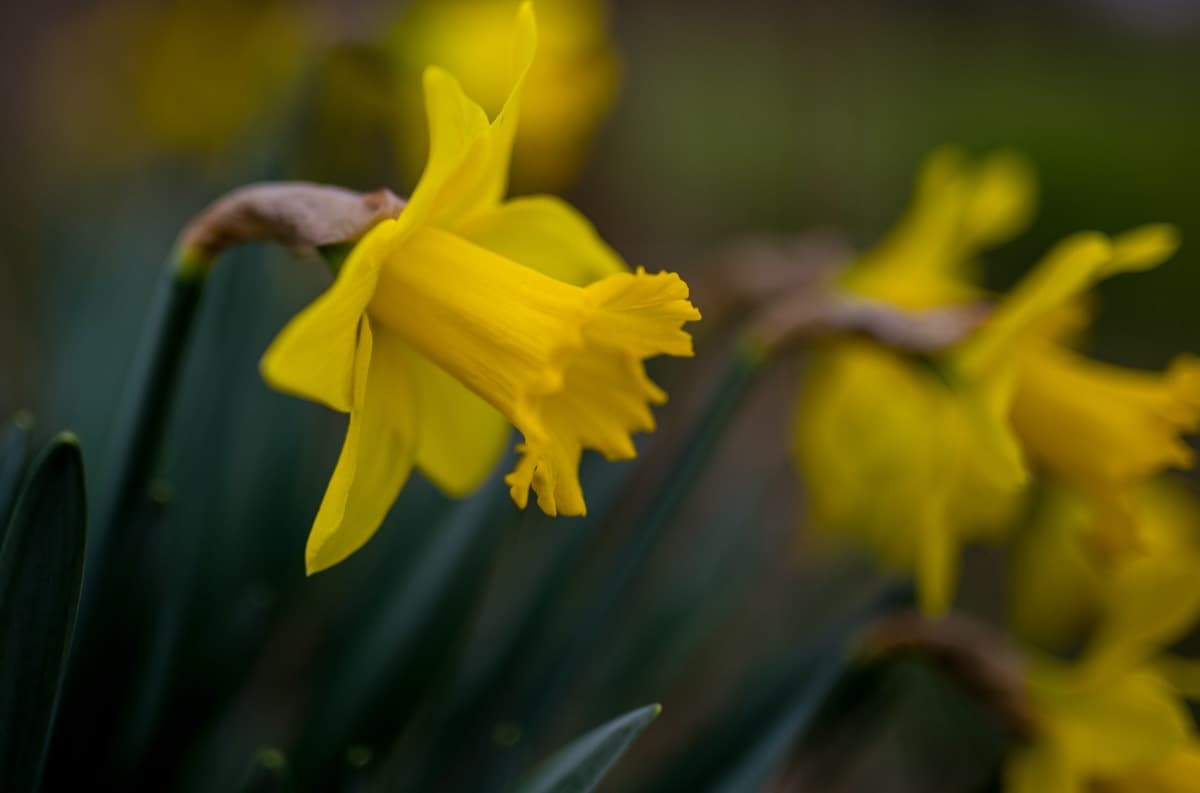
How to Grow and Care for Daffodils in Containers
Types of Daffodils
Trumpet
There are many different types of Daffodils, each with unique beauty. The Trumpet Daffodil is one of the most popular types of Daffodil. It has a long stem and trumpet-shaped flowers. The flower’s color can be yellow, orange, or red, and the petals are slightly curved. The Trumpet Daffodil is a hardy plant that can grow in various climates.
Large-cupped
There are a few different types of Daffodils, each with distinctive looks and characteristics. Large-cupped Daffodils are among the more popular varieties due to their bulbous shape and prominent cups on their flowers. These blooms are usually light pink or yellow and are typically spotted with dark brown or black spots.
In case you missed it: How to Grow and Care for Petunias in Containers: A Beginners Guide
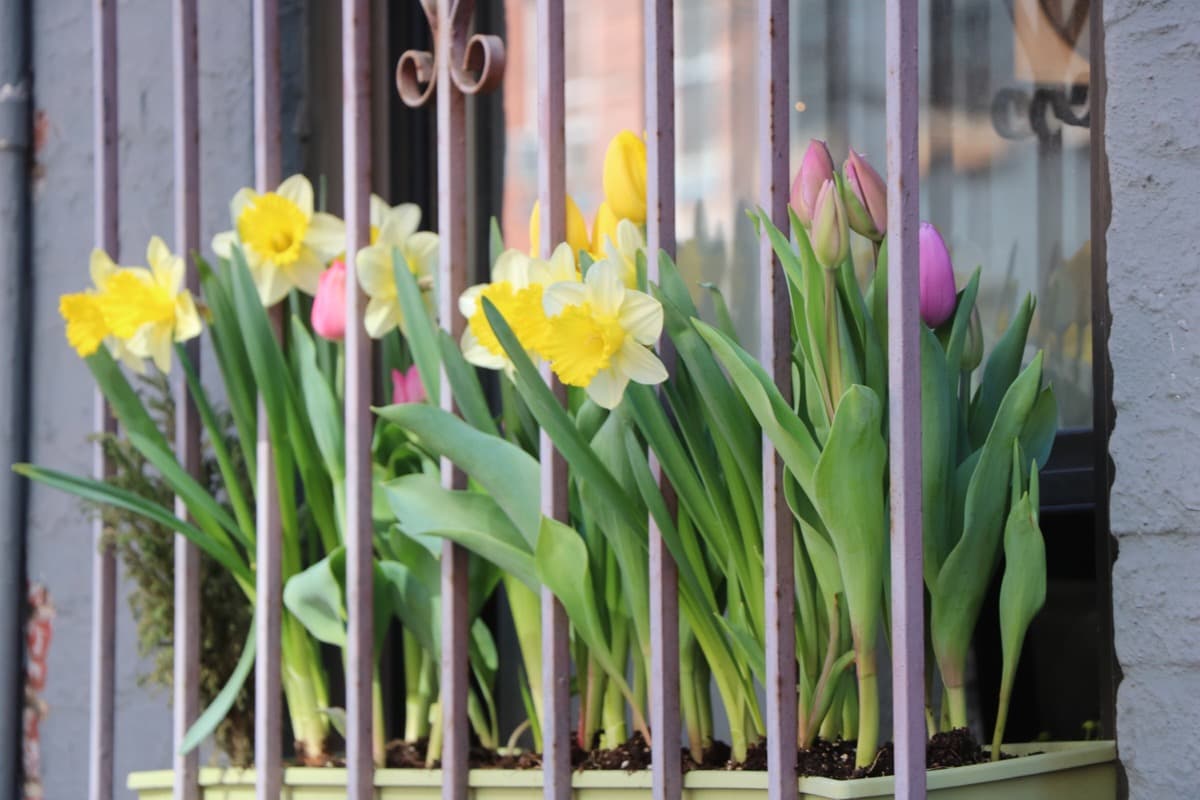
Triandrus
Daffodils come in many different shapes and sizes but share several characteristics. Triandrus is one type of Daffodil that has three petals on the flower. The center petal is the largest and is typically darker in color than the other petals. Triandrus flowers are typically light pink or yellow and often have a reddish hue due to the underlying plant tissues.
Triandrus plants grow best in warm climates but can survive in cold climates if kept indoors during wintertime. Triandrus flowers typically bloom between March and May, but there can be occasional variations in the timing of these blooms depending on location.
Jonquilla
There are many different Daffodils, each with unique characteristics and purposes. Jonquilla Daffodils are typically smaller than other types and more delicate. They’re popular for their bright yellow blooms, which make them perfect for adding brightness to a spring bouquet.
Choose the Right Container for Growing Daffodils
Container types for Daffodils vary in size, shape, and drainage. The key is to find one large enough to hold the plants with some space to spare but not so large that it becomes a chore to water them. The pot’s shallow depth is also important; Daffodils need lots of fresh air and sunlight, so a pot that is too deep will not provide enough light or oxygen.
In case you missed it: How to Grow and Care for Swiss Chard in Containers: Planting to Harvesting Process
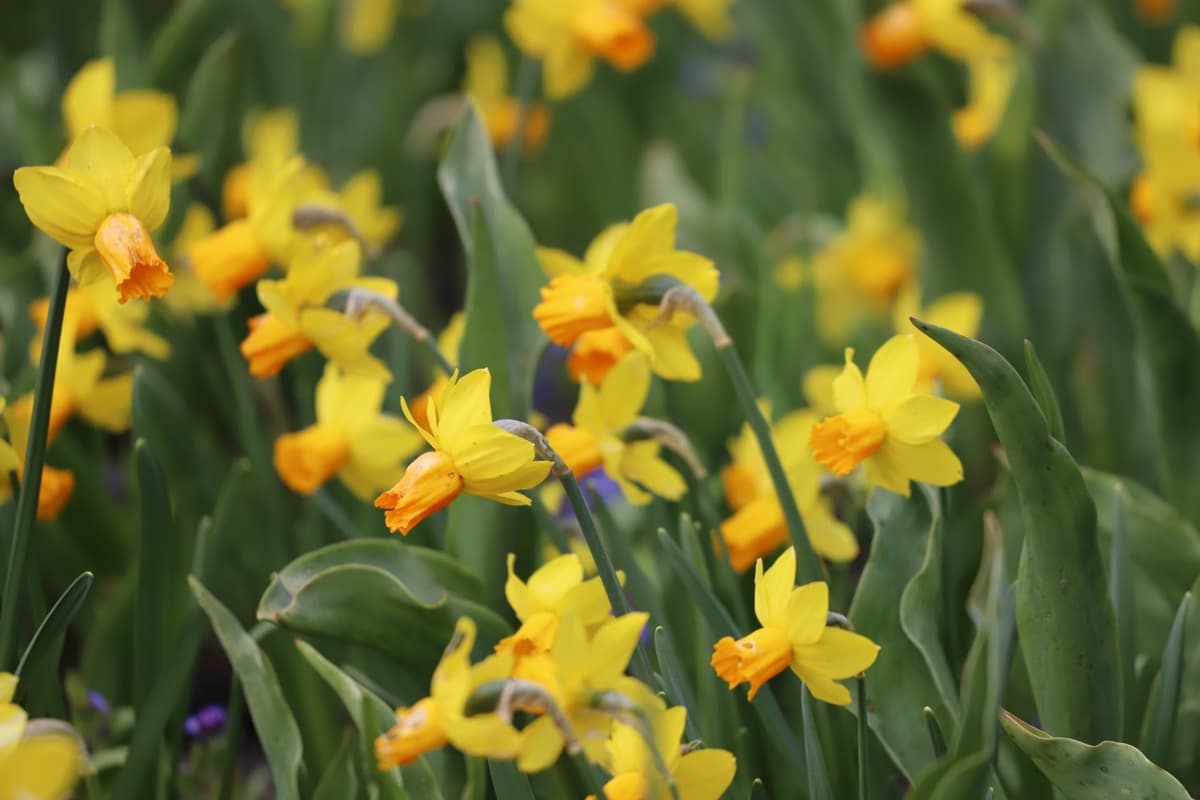
For containers with drainage holes in the bottom, using gravel or small rocks helps to keep moisture levels low and pests away. If there are no drainage holes, use a layer of organic material like aged horse manure or compost in the bottom of the pot. This will help aerate the soil and allow moisture to seep into the ground instead of building up in the pot.
Climate Suitable for Growing Daffodils in Containers
Daffodils are cool-season bulbs, and they will not tolerate temperatures below 0°C. Once you have determined the right temperature for your Daffodil bulbs, keep an eye on them throughout the year, even in winter when temperatures may be below freezing. The sun requirement for growing Daffodils in containers is approximately 8 hours of direct sunlight per day. Daffodils like moist soil and can tolerate some drought, but they grow faster and be more colorful when regularly watered.
Water Requirement for Growing Daffodils In Containers
To grow Daffodils in containers, you need to remember a few things. First, ensure that the soil is well-drained and has good organic matter. Daffodil bulbs require about twice as much water as container plants, so ensure you provide enough water to keep them hydrated. For best results, water your Daffodils once a day during the spring and summer. Watering more frequently if the soil is dry will help prevent foliage from yellowing and wilting. It is also important to check the water levels regularly and top up as needed.
In case you missed it: Best Root Vegetables for Containers: Fast and Easy to Grow
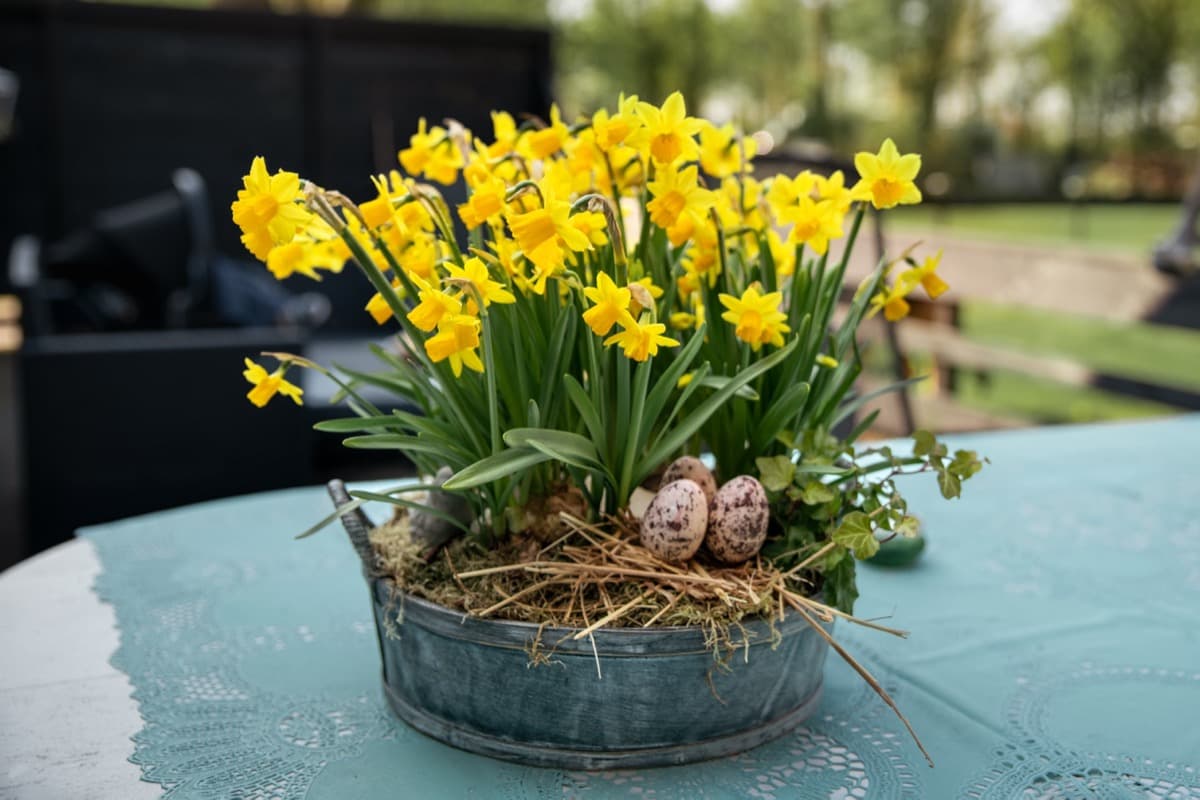
When watering Daffodils in containers, aim to fill the pot or container halfway with water and add enough fresh water daily to keep the flowers moist but not soggy. If the soil becomes dry, add a little water to the surface of the soil before fertilizing. To avoid over-watering, it is best to monitor the plants regularly and adjust watering as needed rather than relying on automatic irrigation systems. When watering Daffodils in containers, be sure not to pour too much water onto the leaves, as this can cause them to rot.
Soil Requirement for Growing Daffodils in Containers
There are a few things that you will need to grow Daffodils in containers successfully. Daffodils appreciate well-drained soil that is rich in organic matter. You can purchase premixed potting soils specifically designed for container growing or mix your own with a good portion of compost and aged manure. Soil for Daffodils is nitrogen-rich, organic matter-rich, and pH neutral. A well-mixed organic garden soil is a good starting point for growing Daffodils in containers.
If you have little or no garden soil available, you can also use potting mix, peat moss, or vermiculite as the base layer under the soil. Mix half of the desired amount of compost or other organic matter with the soil before adding water to moisten it. If your container doesn’t have drainage problems, water only when the soil surface is dry. When growing Daffodils in containers, it is important to note that they do best in soils that are slightly acidic, moist but not wet, and have good drainage.
Propagating Daffodils
From Seed
Place the Daffodil seeds in a pot of fresh, clean soil and water them well. When planting Daffodils from seed, make sure to sow them close together so they can share resources and grow healthy plants. Wait until daytime temperatures reach around 10°C before planting for best results. Once planted, water the seeds regularly but sparingly; do not fertilize them.
In case you missed it: How to Grow and Care for Brussels Sprouts in Containers: Step-By-Step Planting Process for Beginners
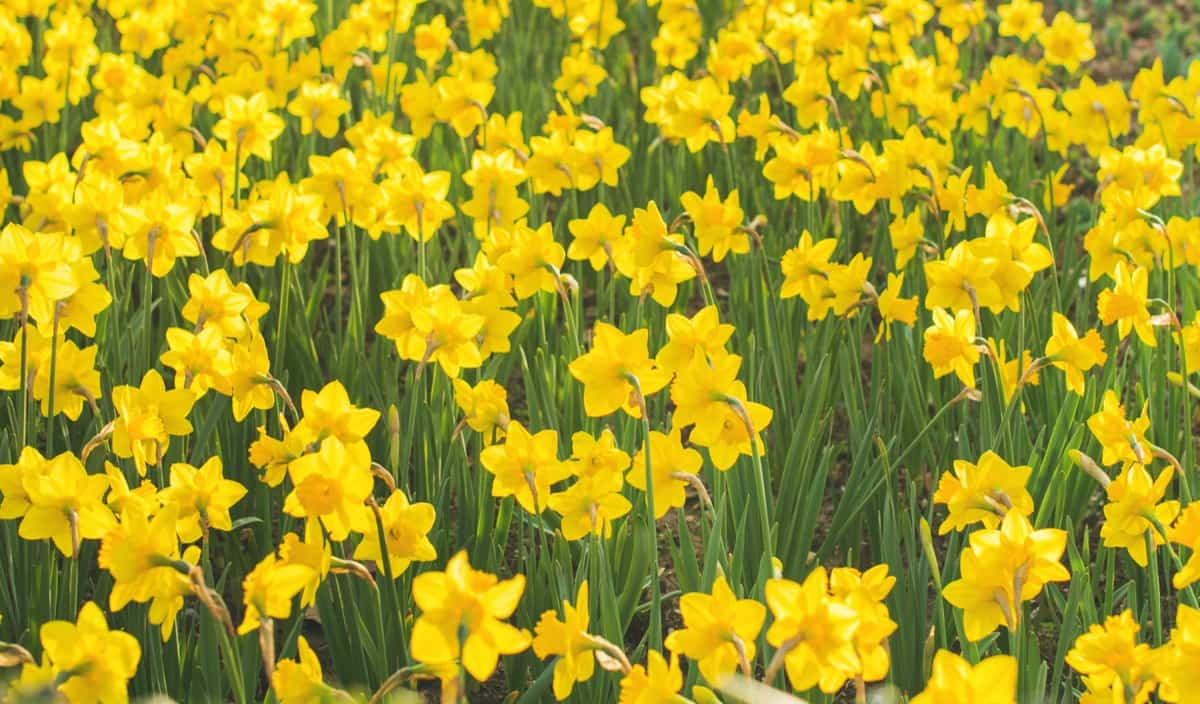
Keep the soil moist, and allow the seedlings to grow until they are about 2 inches tall. When the seedlings have grown tall enough, snip off their root tips with a sharp knife, then gently remove them from the soil. Place the Daffodils in a sunny location and allow them to grow until they reach around 6 inches in height. At this point, begin to divide the plants into smaller clumps and transplant them into fresh soil, where they will continue to grow.
From Bulb Division
Once you have your bulbs, it is time to begin growing them. First, wash the bulbs thoroughly and dry them off. Then, cut the base off the bulb to form a pointy end. Finally, carefully place the bulb in a pot or container holding at least 2 inches of soil. Make sure to fill the pot or container with enough fresh soil to cover the bulb’s base. Add water and give your Daffodil plant plenty of sunlight and water during its growing process.
Daffodil Plant Care
Fertilizer Requirement for Growing Daffodils
A large, deep container is best for Daffodils. You’ll also want a pot that has drainage holes so your bulbs can get rid of excess water. Feed your Daffodils daily with a balanced fertilizer diluted to half-strength. Remember that Daffodils like plenty of nitrogen, so add nitrogen-rich fertilizers such as blood meal or alfalfa pellets during the blooming season. If you live where the sun beats down mercilessly on your flowers during the summer months, grow your Daffodils in a shady spot where they can shelter from the sun’s direct rays.
In case you missed it: 18 Best Vines and Climbers for Containers
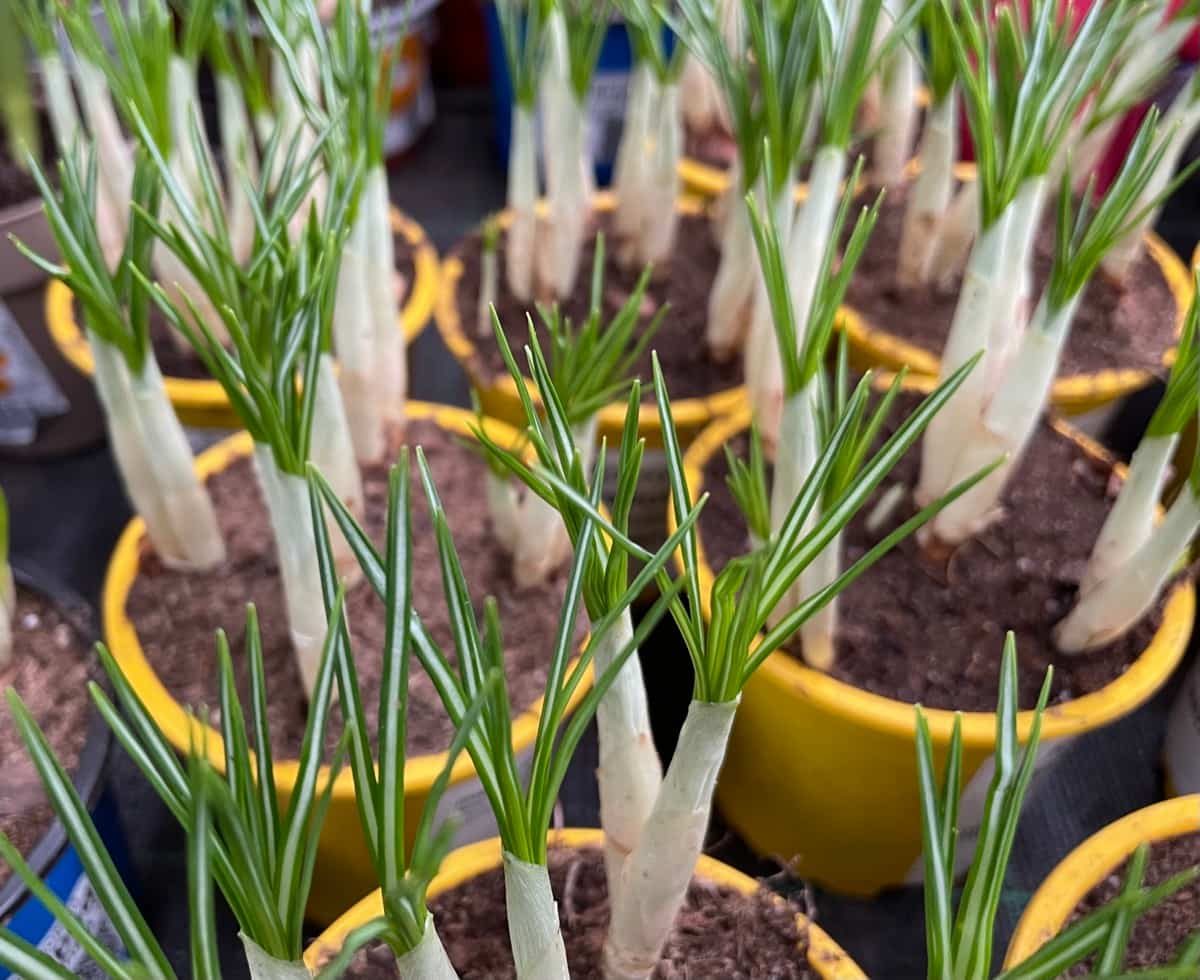
Pruning Daffodils Plant
Pruning Daffodils in containers is a great way to keep them beautiful and healthy. When pruning, always consider the plant’s size, shape, and composition of its foliage. You should cut any dead or damaged stems. Make cuts perpendicular to the stem at 1-inch intervals. Leave 1-2 inches of stem on each plant. Prune off any flowers that are starting to bloom or are unhealthy looking. Repeat this procedure every two weeks until the plants are trimmed to your desired height.
Repot Daffodil Plants
A few things to remember when repotting Daffodils from containers: Daffodils need plenty of moisture and should be watered regularly, especially during the first few months after planting. Repotting time depends on the size of the Daffodil and how well the soil has drained. Generally, Daffodils can be repotted twice in their lifetime.
Once when they reach 6 inches in height and again when they reach 18 inches. When repotting, use a pot at least two times the diameter of the root ball. Remove all of the old soil and roots before adding new soil. Gently pack in the soil until it covers the root ball. Press down gently to ensure good contact between soil and roots. Water thoroughly and watch for signs of new growth.
In case you missed it: How to Grow Cabbage in Containers from Scratch: A Successful Guide for Beginners
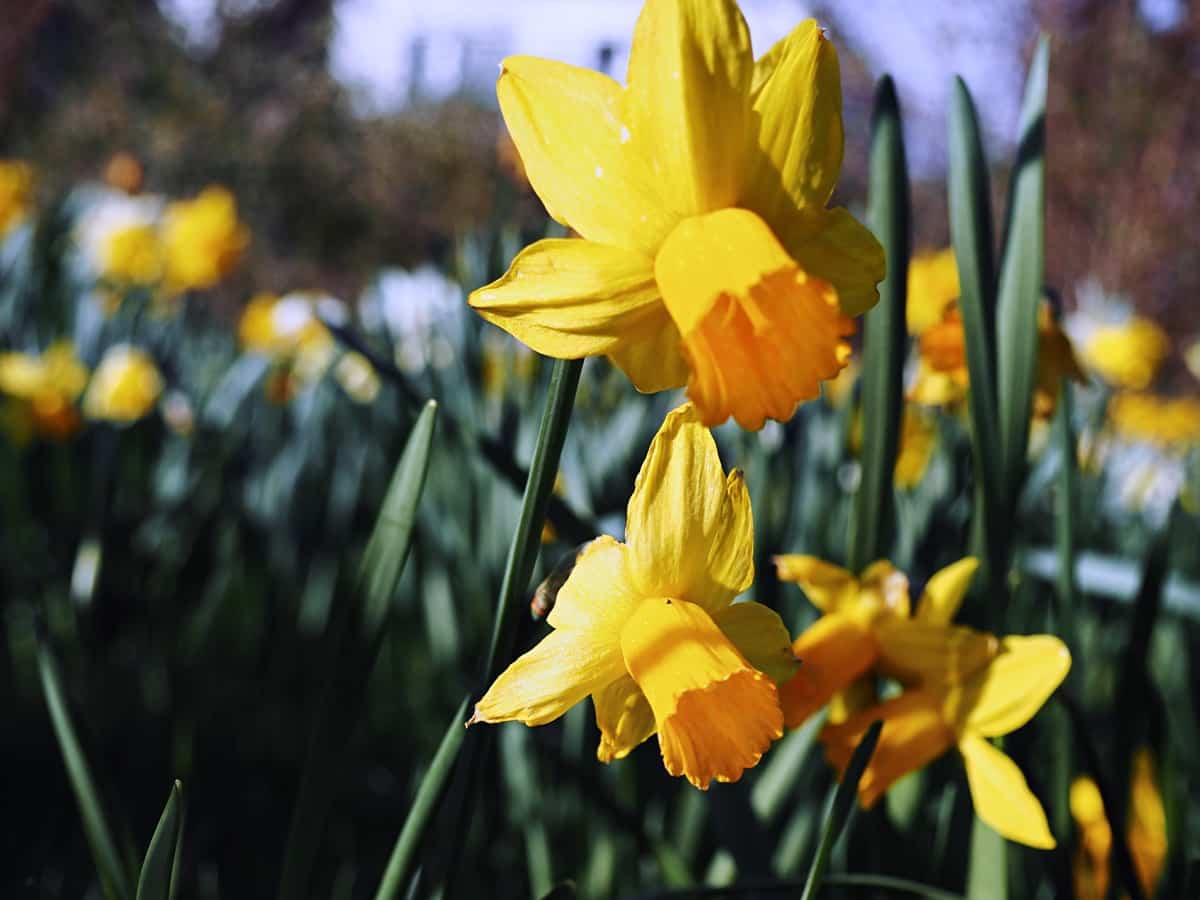
Pests and Diseases of Daffodils and their Control
Daffodils are a popular garden flower, and some pests’ larvae can damage these plants. Few pests can seriously harm Daffodils, but several can cause minor plant damage. Some common pests that may attack Daffodils include thrips, aphids, whiteflies, and mealybugs. Thrips are small insects about 1/8-inch-long that feed on the sap of many types of plants. They can cause significant damage to Daffodil foliage if left unchecked.
Aphids suck juices from plant leaves. Large numbers of aphids can cause distorted leaves and reduced flower production. Whiteflies feed on pollen and nectar. They produce honeydew which can lead to bacterial infections or fungal growth on plant surfaces. Mealybugs are soft-bodied insects that live inside the crevices of leaves and flowers. Control of these pests is typically by use of insecticides or other mitigations such as crop rotation or resistant varieties of plants.
A variety of pests and diseases can affect Daffodils, so it is important to be able to identify and control them. Daffodil growers should familiarize themselves with these flowers’ common pests and diseases to take appropriate action to prevent damage or loss of their crops. Virus disease is one of the most common diseases of Daffodils.
It can cause leaves to be wilted, yellowing, stunt, and desiccating root growth. There is no cure for virus disease, but treatment usually includes applying a fungicide while the plant is young and keeping it well-watered during dry periods. Powdery mildew causes white or grey powdery growth on the surface of leaves. It usually doesn’t kill plants but can reduce their vigor and yield.
In case you missed it: How to Start Home Gardening in Hawaii for Beginners: For Indoors, Outdoors, Raised Beds, Backyards, and Containers
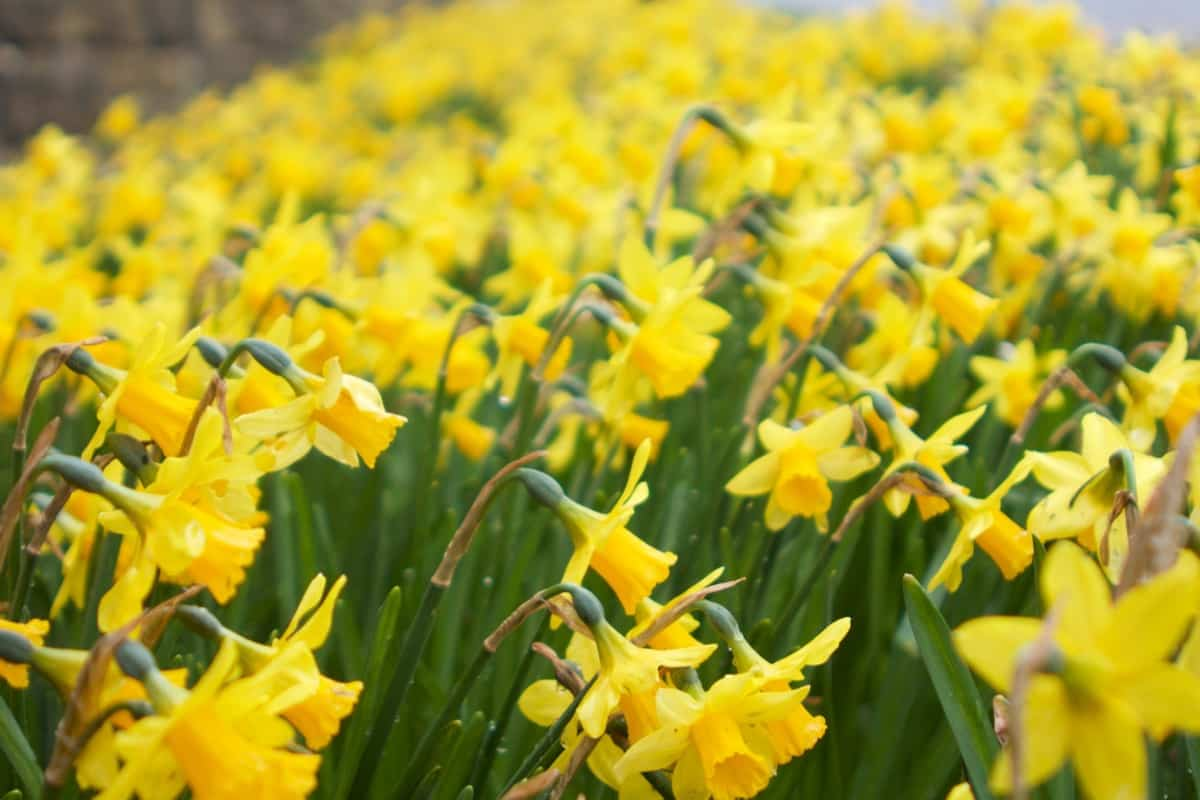
Prevention involves avoiding high humidity levels in the garden, using resistant varieties if available, and spraying a fungicide when symptoms first appear. Slugs and snail creatures love to eat Daffodils bulbs, so it’s important to keep them away from your plants. Slug pellets or snail traps can help you do this, and monitor your garden regularly for signs of these pests. If you find slugs or snails damaging your plants, try using garlic salt or copper sulfate around the base of your plant.
Conclusion
Daffodils are the most popular spring flowers and for a good reason. They come in various colors and styles and are easy to grow, even in small containers. These beautiful bulbs pack a lot of visual punch when planted in containers or hanging baskets and provide year-round interest. By following these tips, you can have plenty of happy Daffodils to brighten up your garden or home all spring.
- Gardening Techniques in Planting Vegetables
- Where to Place Indoor Plants in Your Home
- How to Grow Tomatoes Organically at Home: A Comprehensive Guide
- Organic Gardening on a Budget: Low-Cost Methods and Materials
- Gongura Seed Germination and Planting Methods
- Cabbage Seed Germination and Selection
- Broccoli Seed Germination and Selection
- Asparagus Seed Germination and Variety Selection
- Seasonal Flower Gardening: Best Practices for Spring, Summer, Fall, and Winter
- How to Grow Hibiscus from Flower
- Plantation Ideas for Home Decoration: A Beginners Guide
- Flower Garden Designs and Layouts for Beginners
- Planting and Spacing Techniques in Papaya: A Beginner’s Guide
- Growing Gold: Essential Techniques for Planting Pineapples
- How to Make Kalanchoe Plant Bushy: Home Remedies and Solutions
- 11 Reasons Why Your Gardenia is Not Blooming: Home Remedies and Solutions
- Eco Elegance: The Guide to Designing a Drought-Tolerant Landscape
- Gardening on a Slope: Strategies for Hillside Landscaping
- Nourish and Flourish: Top Organic Mulches for Thriving House Plants
- Everything You Want to Know about Indian Mogra Flower: Discover Uses and Growing
- Green Thumb Success: Expert Tips for Cultivating Greenhouse Pumpkins All Year Round
- Maximize Growth & Flavor: The Ultimate Guide to Companion Planting in Herb Gardens
- How to Control Rhododendron Problems Naturally: Home Remedies and Organic Ways to Fix Them
- Natural Magic: The Remarkable Benefits of Cinnamon for Plants
- Best Steps to Revive Dying Tulip with Natural and Organic Treatment
- 10 Reasons Why Your Angel Trumpet is Not Blooming: Remedies and Treatment
- How to Fix Periwinkle Leaf and Flower-Related Problems: Natural Remedies and Solutions
- How to Fix Zinnias Leaf and Flower Problems: Discover Natural and Home Remedies
- Organic Steps to Induce Lemon Tree Flowers: A Comprehensive Guide
- Bloom Booster: Crafting the Perfect Homemade Bougainvillea Fertilizer
- Optimizing Growth: A Guide to Applying NPK Fertilizer for Potted Plants
- 10 Best Homemade Fertilizers for Rubber Plant: DIY Recipes and Application Method
- How to Boost Female Pumpkin Flowers: Effective Steps for More Flowers and High Yields
- Transform Your Indoor Garden: Top Benefits of Pink Salt for Houseplants
- 10 Best Homemade Fertilizers for Peacock Plants (Calathea): Easy DIY Guide
- Unlock Blooms: 9 Reasons Why Your Potted Chrysanthemum is Not Blooming